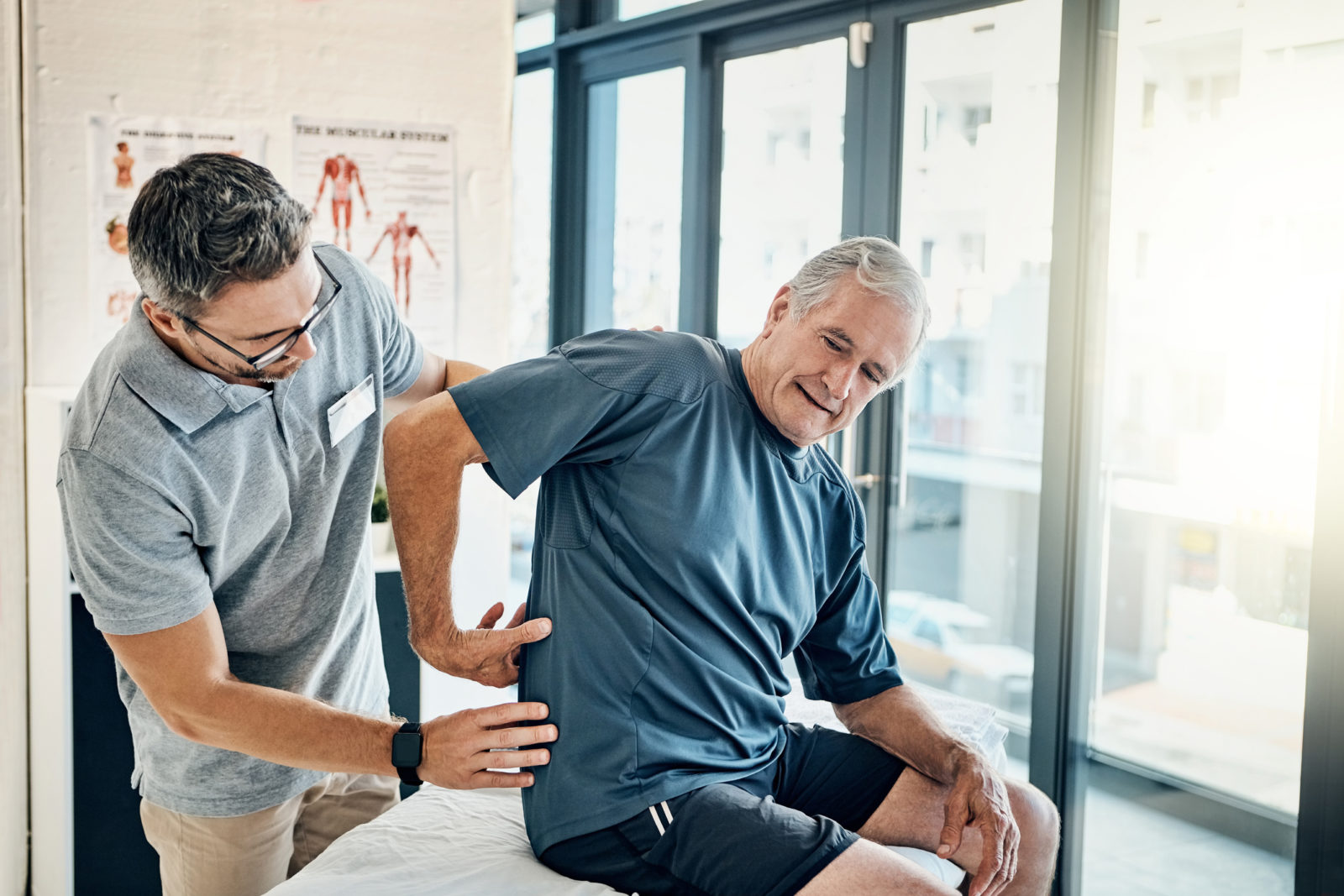An Epidemic of Lower Back Pain

September is Pain Awareness Month, and for many of us, that brings lower back pain to mind. The National Institutes of Health (NIH) reports that 80% of older adults will experience lower back pain during their lives, and at any given time, 25% of us either have back pain, or had it recently.
This “epidemic” is partly due to our modern way of life, which is hard on our spines! We didn’t evolve to sit or stand all day. The structure of our lower backs is complicated, and if something injures or strains this arrangement of vertebrae, discs, muscles, tendons and ligaments, we can suffer from pain and disability—most often short-term, but sometimes chronic.
Lower back pain can stem from an injury, a strained muscle, a problem with a disc or bone, a herniated or ruptured disc, or compression or inflammation of a nerve. With all these possible causes, it might take some time for the doctor to pinpoint the specific cause or causes, even with the help of X-ray and other imagery.
Lower back pain can strike us at any age, but after years of wear and tear on the spine, it’s not surprising that it’s most common among older adults. The NIH even says that age is the top risk factor. Older adults are more likely to have degenerative changes in the spine, as well as arthritis and osteoporosis.
Lower back pain can come and go. Most cases clear up on their own. But if pain persists, it’s time to seek help. Treatment for chronic lower back pain might include:
Medications. Doctors today emphasize that medications should not be considered the first step in treating pain, and most drugs should be taken for the shortest possible time period. Over-the-counter drugs such as nonsteroidal anti-inflammatory drugs (NSAIDs) and topical ointments and creams may be recommended. Antidepressants may help with intractable pain. Some medications are injected directly into the spine. Opioid drugs should be used only for a short period of time and under a physician’s close supervision.
Exercise. Sometimes when people have a sore back, they think that remaining immobile—lying down or sitting—is the best way to recover. In the old days, bed rest was recommended for back pain, but we now know that usually makes things worse! Ask your doctor to prescribe a program of exercises that is right for you. This will likely include aerobic, strengthening and flexibility activities. It’s important to keep at it regularly to avoid “weekend warrior syndrome,” when a person who’s usually a couch potato suddenly decides to overdo the exercise—and their back pays the price.
Nutrition and weight control. Eating well has a good effect on most aspects of our health, and spinal wellness is no exception. Nutritionists recommend that we get enough calcium, phosphorus and vitamin D to support bone health. Maintaining a healthy weight is especially important. Carrying around extra pounds, especially in the midsection, burdens our lower back.
Practicing good body mechanics. Our posture, the way we move, and even our sleep position affect our lower backs. Lifting heavy objects is a top culprit when it comes to back injury. We’re usually advised to “lift with the legs,” but experts today say personalized instruction helps. “It is likely that a one-size-fits-all approach to preventing and managing lifting-related low back pain does not exist,” explained Prof. Peter O’Sullivan of Curtin University in Australia. “Rather a more individualized approach may be required.”
Physical therapy. Your doctor may recommend physical therapy as you’re recovering from a back injury and to prevent further back problems. Physical therapists use hands-on treatments such as heat and cold and electrical stimulation to relieve pain. They supervise and train patients in good body mechanics as mentioned above, and can prescribe a series of exercises to improve mobility and strengthen the muscles that protect the back.
Surgery. For certain types of lower back pain, surgery may be recommended. In most cases, the doctor won’t recommend surgery until nonsurgical treatments have been tried. Nerve stimulation devices may also be implanted surgically.
Smoking cessation. You might not think of a quit smoking program as being a treatment for back pain, but research shows that smoking makes it harder for our bodies to absorb calcium and build new bone. Smoking also cuts down blood flow to the discs, making people who smoke more susceptible to degeneration of the discs.
Complementary therapies. Counseling can be helpful in pain management. University of Pittsburgh School of Medicine experts say that mindfulness meditation can also help older adults cope with back pain. In other studies, yoga and tai chi showed promise. Other complementary therapies include spinal manipulation, traction, massage, spinal mobilization, acupuncture and biofeedback. The National Center for Complementary and Integrative Health emphasizes that it’s important to talk to your doctor about any complementary health practices you are considering.
Many seniors think lower back pain is just a part of growing older, but much can be done to treat the causes and the pain. Talk to your doctor if lower back pain is having an impact on your life.
The information in this article is not intended to replace the advice of your healthcare provider. Talk to your doctor if you are experiencing lower back pain, and before beginning an exercise program or taking medications.
Source: IlluminAge
![Grace Barker Health [logo]](https://www.gracebarkerhealth.com/wp-content/themes/gracebarker-2017/images/logo.png)




